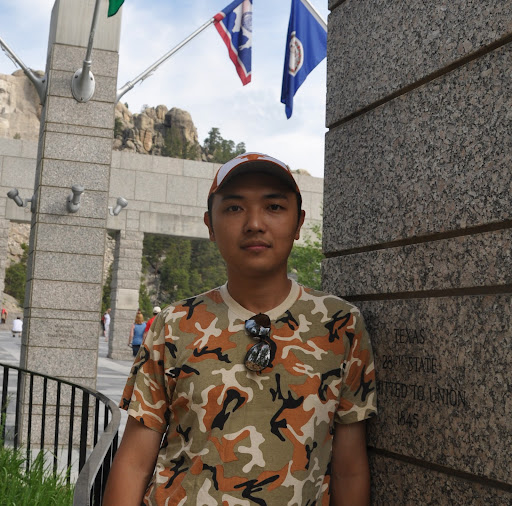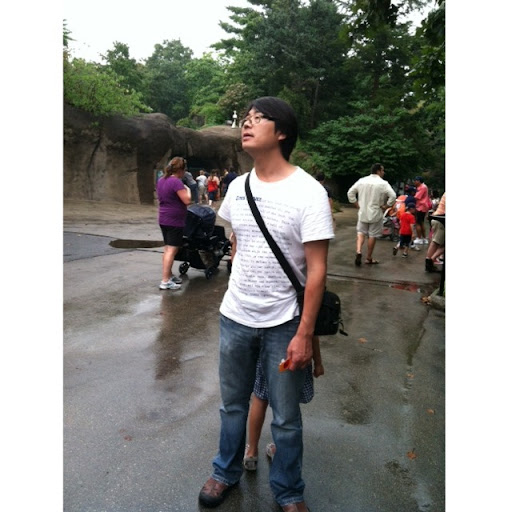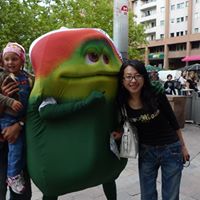Yubing Wang
age ~40
from Rego Park, NY
- Also known as:
-
- Bing Wang Yu
- Yu Wang
Yubing Wang Phones & Addresses
- Rego Park, NY
- New Brunswick, NJ
- Indiana, PA
- 7121 70Th St APT 1, Glendale, NY 11385 • (718)4971398
Us Patents
-
Transparent Conductors And Methods For Fabricating Transparent Conductors
view source -
US Patent:7960027, Jun 14, 2011
-
Filed:Jan 28, 2008
-
Appl. No.:12/020849
-
Inventors:James V. Guiheen - Madison NJ, US
Yubing Wang - Piscataway NJ, US
Peter A. Smith - South Amboy NJ, US
Kwok Wai Lem - Randolph NJ, US -
Assignee:Honeywell International Inc. - Morristown NJ
-
International Classification:B32B 27/40
B32B 15/04
H01B 1/02
C08K 5/00 -
US Classification:4284231, 428457, 2525181, 524284, 524507
-
Abstract:Transparent conductors and methods for fabricating transparent conductors are provided. In one exemplary embodiment, a transparent conductor comprises a substrate having a surface and a transparent conductive coating disposed on the surface of the substrate. The transparent conductive coating has a plurality of conductive components of at least one type and an aliphatic isocyanate-based polyurethane component.
-
Integrated Biofuel Cell With Aligned Nanotube Electrodes And Method Of Use Thereof
view source -
US Patent:20080160384, Jul 3, 2008
-
Filed:Apr 5, 2007
-
Appl. No.:11/784085
-
Inventors:Zafar Iqbal - Morristown NJ, US
Yubing Wang - Piscataway NJ, US -
International Classification:H01M 8/16
C12M 1/40
H01M 4/00
C23C 16/44
B05D 3/12 -
US Classification:429 34, 429 12, 429 46, 42725528, 427240, 429209, 20440314, 977734, 977750, 977700, 977752
-
Abstract:The present disclosure provides for a method of forming, producing or manufacturing functionalized and soluble nanomaterials, most specifically carbon nanotubes on a substrate, which can be used in the production or manufacture of biofuel cells. One embodiment provides for the coupling of biofuel cells with a nanomaterial, wherein the nanomaterial supports catalytic enzymes. Another embodiment provides for a biofuel cell which uses enzymes immobilized on nanomaterials as electrodes. Another embodiment provides for the construction of a biofuel cell, wherein the application of a microwave process, and/or an electrochemical technique, is used to develop a biofuel cell having nanomaterial/enzyme-based electrodes on a substrate. Another embodiment provides for a composite of nanomaterial grown on a substrate, coupled to tethered or bonded enzymes, which makes it possible to fabricate direct electron transfer electrodes. Another embodiment provides for an implanted device. Another embodiment provides for a biofuel cell that can also function as a biosensor. A method for producing a nanomaterial-substrate system is also disclosed.
-
Rheology-Controlled Conductive Materials, Methods Of Production And Uses Thereof
view source -
US Patent:20090035707, Feb 5, 2009
-
Filed:Aug 1, 2007
-
Appl. No.:11/832067
-
Inventors:Yubing Wang - Piscataway NJ, US
James Guiheen - Madison NJ, US
Yuan-Ping Ting - Plainsboro NJ, US
Gary L. Martin - Piscataway NJ, US -
International Classification:H01B 1/00
G03C 5/00 -
US Classification:430322, 252500, 252502, 252506, 252514
-
Abstract:Compositions comprising at least one conductive nanomaterial and at least one rheology control additive are disclosed. These compositions can be used to form a film for uses requiring sufficient conductivity and light transparency. Methods of forming a conductive composition include: providing at least one conductive nanomaterial, providing at least one rheology control additive, and blending the at least one conductive nanomaterial and the at least one rheology control additive together to form the conductive composition. Methods of forming patterned transparent conductive coatings include: providing and applying a layer comprising at least one photosensitive or photoimageable composition to a surface, providing and applying a layer comprising at least one conductive nanomaterial and at least one rheology control additive, exposing and developing the layered material, and treating the layer comprising the at least one rheology control additive in order to remove at least part of the rheology control additive. Coating compositions, films, patterned films and structures containing these films and patterned films are also described.
-
Transparent Conductors Having Stretched Transparent Conductive Coatings And Methods For Fabricating The Same
view source -
US Patent:20090056589, Mar 5, 2009
-
Filed:Aug 29, 2007
-
Appl. No.:11/846682
-
Inventors:James V. Guiheen - Madison NJ, US
Yuan-Ping R. Ting - Plainsboro NJ, US
Gary L. Martin - Piscataway NJ, US
Yubing Wang - Piscataway NJ, US
Kwok Wai Lem - Randolph NJ, US -
Assignee:HONEYWELL INTERNATIONAL, INC. - Morristown NJ
-
International Classification:C09D 4/00
B05D 3/12 -
US Classification:106285, 1062872, 10628723, 10628724, 10628726, 1062873, 427171
-
Abstract:Transparent conductors and methods for fabricating transparent conductors are provided. A method for fabricating a transparent conductor comprises providing a stretchable transparent substrate. A dispersion comprising a plurality of conductive elements and a solvent is formed. The dispersion is applied overlying the stretchable transparent substrate. The solvent is at least partially evaporated to form a transparent conductive coating on the stretchable transparent substrate and the substrate and the transparent conductive coating are stretched.
-
Process For Forming Self-Assembled Monolayer On Metal Surface And Printed Circuit Board Comprising Self-Assembled Monolayer
view source -
US Patent:20140262461, Sep 18, 2014
-
Filed:Mar 7, 2014
-
Appl. No.:14/200760
-
Inventors:- South Plainfield NJ, US
Yubing Wang - Piscataway NJ, US -
Assignee:OMG Electronic Chemicals, Inc. - South Plainfield NJ
-
International Classification:H05K 3/28
H05K 1/09 -
US Classification:174257, 174256, 427 962, 106 1413
-
Abstract:The present invention provides a printed circuit board comprising a metal surface, such as a final finish, that has been coated with a self-assembled monolayer. The self-assembled monolayer forms a coating on the metal surface that is resistant to corrosion, thus preserving the solderability of the metal surface. The present invention also provides a solution of an alkanethiol and a non-organic solvent that can be used for forming a self-assembled monolayer on a metal substrate. The present invention also provides a process for depositing a self-assembled monolayer on a metal substrate by applying a solution of an alkanethiol and a non-organic solvent to a metal substrate, such as a surface of a printed circuit board.
Resumes

Yubing Wang
view source
Yubing Wang
view source
Student At Indiana University Of Pennsylvania
view sourceLocation:
Greater New York City Area
Industry:
Logistics and Supply Chain
Youtube
Googleplus

Yubing Wang
Education:
University of Texas at Austin - Civil engineering, Tongji University - Civil engineering

Yubing Wang

Yubing Wang

Yubing Wang
view source
Yubing Wang
view source
Yubing Wang
view source
Yubing Wang
view sourceGet Report for Yubing Wang from Rego Park, NY, age ~40





